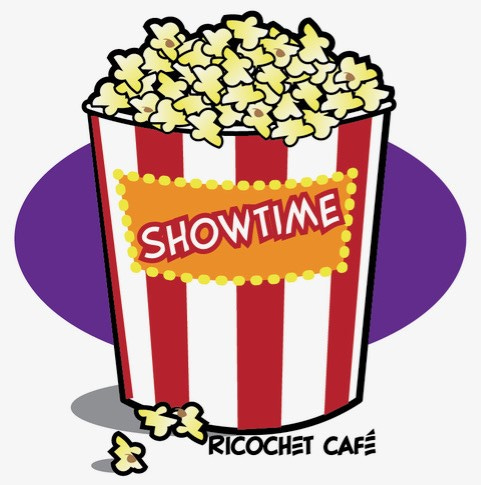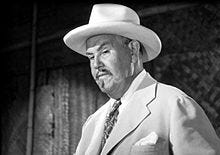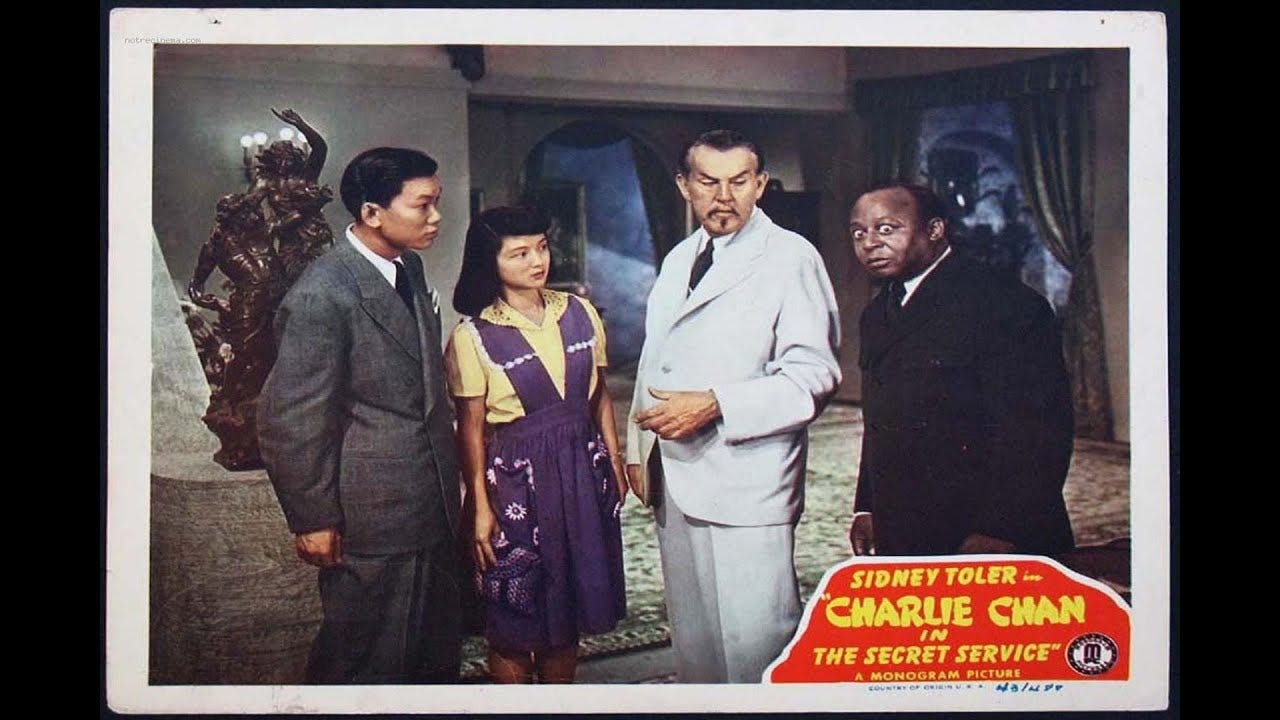The Charlie Chan Detective Series
Movie Review
America has always loved the serialized whodunnit. From Columbo to Law & Order and their many spinoffs, there is something quite satisfying about an ensemble cast and a never-ending stream of dead bodies. The genre is so incredibly robust, it sometimes takes on strange contours like Have Gun Will Travel, a serialized Western detective show, or Blue’s Clues, which I have never seen but appears to be about a crime-fighting dog. And there is also Scooby Doo, another crime-fighting dog. From old ladies to mentally ill middle-aged men, detectives are often the people you’d least expect.
One of the most interesting entries into this category of entertainment are the today largely forgotten series of Charlie Chan detective movies. Started in 1926, the series spanned almost 50 movies and as many years. It is tempting to look at Charlie Chan through today’s multicultural eyes or, worse than that, with woke sensibilities, but the show offers some insights that show America may not have always been the hotbed of racism and xenophobic malevolence that many liberals believe. In fact, Charlie Chan is all but forgotten today, in part because this fictional detective does not fit the narrative that movies were made by white people to slam non-white people.
The movies began as a series of crime novels featuring a fictional Hawaiian detective of Chinese ancestry named Charlie Chan. The author was Earl Derr Biggers, a white American novelist, and his inspiration came from a real Hawaiian detective of Chinese ancestry named Chang Apana.
The Charlie Chan character was an intelligent, mild-mannered man who dressed well, usually wore a hat indoors, and displayed a sort of cautious humility. The first audiences to see this character loved him and kept buying tickets to his movies. It was not until later on that the character was critiqued as stereotypical. The main complaints were that Charlie Chan was too polite, too obsequious, too honorable. Those are hardly despicable flaws, but perhaps the criticism was that Chan should have been more of an anti-hero. He wasn’t. He was the hero’s hero.
Chan was also criticized for talking in a stereotypic way. In all of the movies, Chan speaks an odd form of broken English—it is not heavily accented but tends to be short and non-idiomatic. In a few of the films, Charlie Chan speaks and writes Chinese as part of the plot. And the fact is that Chan is a Chinese-born character and many people who speak Chinese as a first language never master flawless idiomatic American language. (In the films, Chan’s sons speak perfect idiomatic English.)
At the time he arrived in American cinemas, Charlie Chan was a stark counterpoint to the “yellow peril” and sinister Fu Manchu characters that Hollywood was filming. Charlie Chan embodied wholesome values even as in some of the films he had to step over multiple dead bodies in his pursuit of clues. Charlie Chan’s family-oriented lifestyle and respectful behaviors so riled lefty film critics that no more Charlie Chan detective movies were made after 1981. The original intent of the movies—to portray a Chinese detective in a positive light—was obscured by a growing modern sensibility that portraying a Chinese detective at all was obviously racist.
The character Charlie Chan had fourteen children and a wife, and an American-sounding older son often helped the father in his crime-solving pursuits. This gives rise to the fact that Chan often called his older sons by numbers: Number One Son, Number Two Son. Is this racist? I hardly think so, particularly since Chinese families tend to emphasize birth order in how they address each other. For instance, older brothers have specific forms of address they must use when talking to younger brothers and vice versa—and, yes, the older siblings got more respect.
In later films, Charlie Chan had a Black chauffeur named Birmingham Brown played by Mantan Moreland (who was perhaps better known for his work at the Apollo Theater in Harlem, where he performed with Redd Foxx in the 1950s). The nervous Birmingham character provided a comic counterpoint to Chan’s deadpan deliveries and his rather stoic reviews of crime scenes, but some critics felt that the portrayal of a loyal but jittery Black chauffeur who often over-reacted to danger was offensive. Some of the scenes with Moreland are extremely funny, others more stereotypical. Moreland retired from the series in 1959, stating that he regretted some of the stereotyped casting. Nobody today would have written the Birmingham character the way it was written then, but this does not diminish the fact that Moreland was a first-rate comedian.
The series was so successful that Spanish versions were made of some of the most popular titles in the 1930s through the 1950s. An interesting technique was used. Instead of subtitles or dubbing, the cast and crew just filmed everything twice—first in English, then later that same day they shot the same scenes in Spanish.
The Charlie Chan movies were also favorites in China. When the studios planned publicity tours in China, the star was greeted by cheering crowds who respectfully addressed the lead actor as Mr. Chan. In the 1930s, Chinese versions of the Charlie Chan films were among the most popular films viewed by expatriate Chinese in the United States.
The first to play the role of Charlie Chan was George Kuwa, a Japanese actor. Others who played Charlie Chan were Kamiyama Sojin, Warner Oland, Sidney Toler, and Roland Winters, none of whom were Chinese. In many episodes, Number Two Son was played by Victor Sen Yung, a Chinese actor who is perhaps better known to old TV buffs for his role as Hop Sing on Bonanza.
The Charlie Chan series was a big win for the studios: the films were fast and relatively inexpensive to produce and generated reliably good box office receipts. Despite its long success, no one has been able to revitalize the series. Various adaptations of the Chan series have been planned but either died on the vine or never gained traction. Neil Simon did a parody of the Charlie Chan series with his Murder by Death, in which Peter Sellers plays Sidney Wang.
Critics have always never known what to do with Charlie Chan. Today, the Charlie Chan movies look dated and production values are low, but some of the story lines still hold, the acting is good, some parts are very funny, and there are some genuinely good plot twists. Ellery Queen though Charlie Chan movies were a positive service to “inter-racial relations.” The New York Times critic David Kehr conceded that while Charlie Chan might have been a stereotype, he was a good stereotype. The Asian actor, Keye Luke, who played Chan’s son in several films said, far from being demeaning to Chinese people, the films portrayed Charlie Chan as “a Chinese hero.”
Some critics have argued that the character of Charlie Chan as a smart and honorable detective is one-sided. This is a crazy critique because the whodunnit genre itself is not about character arcs and internal development—it’s about solving a mystery. In this genre, it’s the plot that does the heavy lifting, not the character portrayals. For example, think about the original Law & Order. Was the character of Jack McCoy one-dimensional? We only ever saw him at work; his past relationships, his daughter, and other parts of his life are only hinted at briefly. We never find out much about McCoy feels about his life, his career choices, even the people he works with. We watched not to see Jack McCoy grow as a person but to see how he was able to put the bad guys behind bars. Remember Columbo? We never even saw the oft-quoted Mrs. Columbo until she got her own short-lived show. We only wanted to see how Columbo was going to find proof of the crime. The genre itself demands that the plotline take centerstage and the characters reserve their internal struggles for other types of movies.
This makes it somewhat difficult to challenge the portrayal of the Charlie Chan character, since the genre is plot driven. Chan is a serviceable character, in fact, he fits rather well into the mold where the detective solving the mystery is a bit of an unusual character. After all, Columbo was an odd duck, so was Monk and Jessica Fletcher and Miss Marple and Spencer Reid in Criminal Minds. It is unfair to single out Charlie Chan for being an eccentric character when the genre practically demands the lead detective be a little bit out of the ordinary.
Charlie Chan’s dialog was short and succinct and has been criticized as being reminiscent of a fortune cookie. Yet even his short remarks display incredible astuteness and sometimes a bit of the lash. When he encountered anti-Asian prejudice (which happens in a few of the later films), he soldiers on nobly and then delivers the blow when he solves the crime: “Perhaps listening to a Chinaman is no disgrace” (The Chinese Parrot).
These films are worth watching—maybe not all of them (there are nearly 50 of them in the series)—but they are entertaining in an old-movie kind of way. And they demonstrate clearly how in a multiracial society, racial issues are more complicated than they look. It also shows how our attitudes about race, racism, and cultural stereotypes change over time. It would be unfair to look back at these old movies and fail to see them in the social context in which they were produced.
As Charlie Chan said in Charlie Chan at the Circus, “Mind, like parachute, only functions when open.” (By the way, this is a Charlie Chan film for serious fans—it is the only one in which Mrs. Chan and all 14 of the Chan children appear!)




